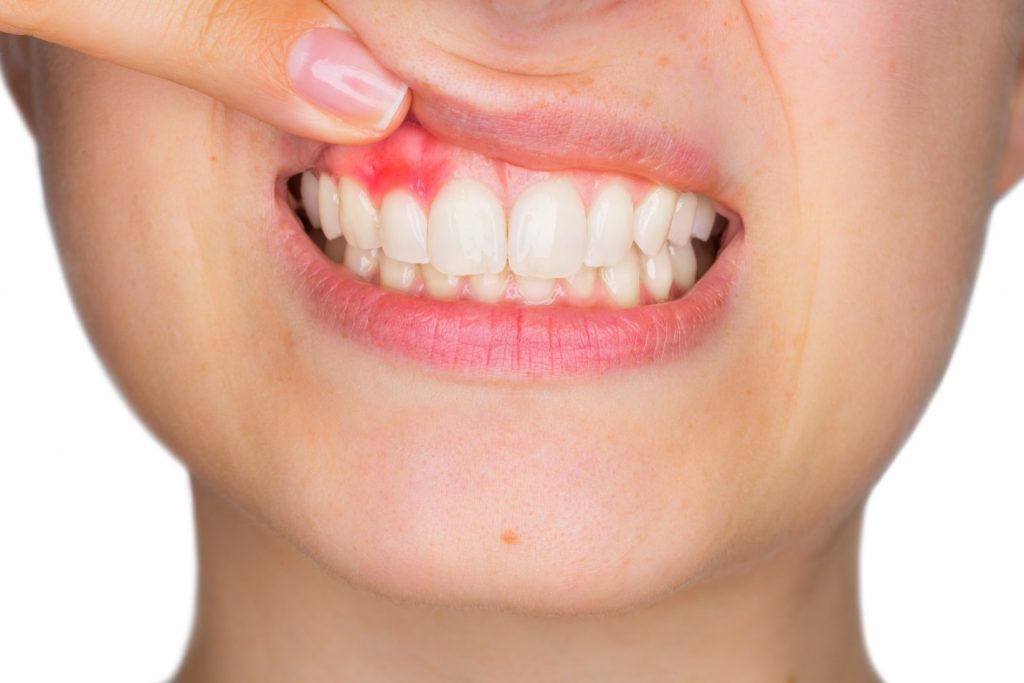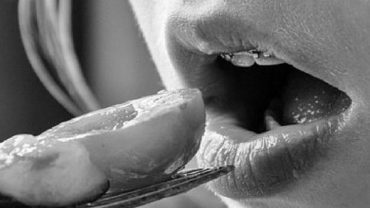Receding gums happen when the tissues surrounding the teeth wear away or pull back. This exposes the tooth’s root and leaves it unprotected. When gums recede, gaps or “pockets” form between the gum line and the teeth, allowing disease- and cavity-causing bacteria to build up.

What Causes Gum Recession
Gum recession can be due to a number of factors. Here are some of the common causes:
- Poor or inadequate dental hygiene
- Aggressive brushing
- Periodontal or gum disease
- Hormonal changes in women caused by pregnancy, puberty, or menopause
- Use of tobacco products
- Lip and/or tongue piercing
- Misaligned bite or crooked teeth
If you leave it untreated, gum recession can severely damage the structures of your teeth, which leads to a number of complications.
Possible Complications
As the disease worsens, gum diseases such as receding gums destroy the tissues supporting the teeth. When there isn’t enough gum tissue to hold the roots of the teeth in place, they become loose and fall out. In some cases, your dentist will choose to extract the affected teeth before they fall out. The California Dental Association (CDA) says receding gums are responsible for 70 percent of tooth loss in adults.
Another side-effect that can occur from receding gums is tooth sensitivity. The gums protect the roots, and the enamel on your teeth protects the dentin underneath. Dentin is the layer that covers the pulp of the tooth. It’s softer than enamel and is connected to the nerves that trigger pain, so it’s more sensitive. When the gum line recedes, the dentin becomes exposed. This triggers sensitivity to hot, cold, sweet, or acidic food.
Gum recession also causes gum line cavities, which is a misnomer because the decay actually occurs at the tooth’s root. Again, when the gum recedes, the roots of the teeth become exposed. Since the roots don’t have the protective layer of enamel, they’re more vulnerable to cavities. Root decay is more aggressive than cavities on the surface of the teeth. It spreads to the inside of the tooth and attacks the nerves, causing infection and agonizing toothaches.
Treatment Options

Several treatment options are available for people with severe gum recession. Some dental clinics offer proprietary treatments, such as the Chao Pinhole® Surgical Technique of naturalsmilesky.com.
Here are the two most common surgical procedures for gum recession:
Open flap scaling and root planing: The periodontist will clean your gums to get rid of the bacteria and plaque buildup in the pockets. Then, he or she will lift the gums and put them back in place. The goal is to secure the gum tissue over the tooth root so that it’s no longer exposed, eliminating the gaps in the gum line.
Connective tissue grafting: The periodontist will cut a flap of skin from the palate of your mouth. He or she will take the tissue or the graft from the flap and stitch it to the gum line around the exposed root. After, the periodontist will secure the gum flap back in place.
Mild gum recession typically don’t need surgery. In these cases, your dentist will only clean your gums to get rid of the bacteria and prescribe antibiotics if there’s an infection.
Of course, prevention trumps cure any time. Commit to a good dental routine, so you can protect your teeth from oral cavities and your gums from diseases and infection. This way, you save money from undergoing expensive treatments as well.














